Colorado’s Landscape
Colorado’s physical and biological geography is anything but simple, the diversity of the eight ecosystems (alpine tundra, Subalpine Forest, Montane Shrubland, Montane Forest, Grassland, Semi desert shrub land, pinion – juniper woodland, riparian systems and urban landscape) creates a vast variety of mammal population.
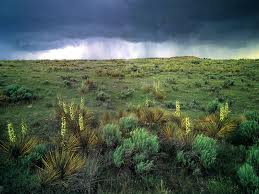 GRASSLANDS: (blue grama, buffalo grass, western wheat grass, livery wormwood, prickly-pear cactus, needle and thread, sand bluestem and sand dropseed) covers 35-40 percent of the state and are single most ecosystem type in Colorado and tend to host large grazing animals, such as live stock and bison, as well as those known for their predatory instincts, such as wolves, as well as those characterized by the ability to move rapidly, and the ability to live under ground. The distribution of these animals is largely dependent on the soil type.
GRASSLANDS: (blue grama, buffalo grass, western wheat grass, livery wormwood, prickly-pear cactus, needle and thread, sand bluestem and sand dropseed) covers 35-40 percent of the state and are single most ecosystem type in Colorado and tend to host large grazing animals, such as live stock and bison, as well as those known for their predatory instincts, such as wolves, as well as those characterized by the ability to move rapidly, and the ability to live under ground. The distribution of these animals is largely dependent on the soil type.
For example plains pocket gophers prefer deep sandy soil, plains pocket mice in shrubby areas with sage brush and yuccas, the thirteen lined ground squirrel and the swift fox prefer bunch grasses and crumbly sandy soil where they can dig their dens and the badger prefers areas where rodents are abundant. Picture: Colorado – Comanche National Grasslands
 SEMIDESERT SHRUBLANDS: (big sagebrush, mountain sagebrush, greasewood, shadescale, four-winged saltbrush, balsamroot) elevations 4,000 to 8,000 ft and covers about 15 percent of the state.
SEMIDESERT SHRUBLANDS: (big sagebrush, mountain sagebrush, greasewood, shadescale, four-winged saltbrush, balsamroot) elevations 4,000 to 8,000 ft and covers about 15 percent of the state.
This specific terrain tends to host desert cottontails, black tailed jack rabbits, ord’s kangaroo rat, canyon mice, and ringtails. Sandy soil are favored by the grasshopper mouse, sagebrush voles, and mixed grass areas are favored by Merriam’s shrew, desert shrew, and the pallid bat. Picture by: Rockwood School District
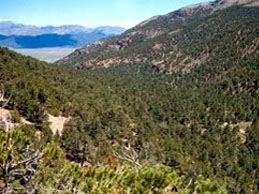 PINION-JUNIPER WOODLANDS: (pinion pines, Utha Juniper, red cedar, blue grama, june-grass, prickly-pear, fescues, muhly, and blue grass) elevations 5500-8000 ft and covers about 10-15 percent of the state.
PINION-JUNIPER WOODLANDS: (pinion pines, Utha Juniper, red cedar, blue grama, june-grass, prickly-pear, fescues, muhly, and blue grass) elevations 5500-8000 ft and covers about 10-15 percent of the state.
This terrain tends to host bats, Desert Cottontail, Nuttall’s Cottontail, rock Squirrels, pinion mice, canyon mice, Mexican Woodrat, Ringtails, hog-nosed skunk, Gray Fox, mountain lion, and mule deer. Picture by: Rockwood School District
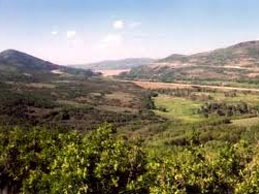 MONTANE SHRUBLANDS (Gamble Oak, mountain-mahogany, serviceberry, skunkbrush, smooth sumac, wax currant, wild rose, needle-and-thread, blue grama. Western wheat-grass, side-oats grama, mountain muhly, rabbitbrush, choke cherry) elevation 5500 to 8500 ft and covers 10 to 15 percent of the state.
MONTANE SHRUBLANDS (Gamble Oak, mountain-mahogany, serviceberry, skunkbrush, smooth sumac, wax currant, wild rose, needle-and-thread, blue grama. Western wheat-grass, side-oats grama, mountain muhly, rabbitbrush, choke cherry) elevation 5500 to 8500 ft and covers 10 to 15 percent of the state.
This terrain being abundant in fruit, twigs, foliage, and shrubs tends to host brush mice, pinion mice, rock mice, deer mice, four of the six woodrats found in Colorado, with the Mexican Woodrat dominating. You will also find ringtails, Western Spotted Skunk, Grey Fox, and bats. Picture by: Rockwood School District
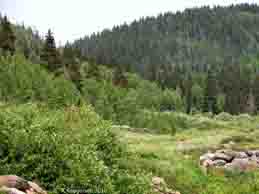 MONTANE FORESTS: Ponderosa pine, Douglas-fir, quaking aspen, white fur, limber pine, Colorado blue spruce, lodgepole pine, wax currant, Arizona Fescue, sulpher-flower, kinnikinnik, mountain maple) elevations 5600-9000 ft and covers 10 percent to the state.
MONTANE FORESTS: Ponderosa pine, Douglas-fir, quaking aspen, white fur, limber pine, Colorado blue spruce, lodgepole pine, wax currant, Arizona Fescue, sulpher-flower, kinnikinnik, mountain maple) elevations 5600-9000 ft and covers 10 percent to the state.
Animals found in these areas are bats, Nuttall’s cottontail, Least chipmunk, Colorado chipmunk, Uinta chipmunk, Albert’s squirrel, porcupine, and the American Pine Marten.Picture by: Rockwood School District
 SUBALPINE FOREST: (Engelmann spruce, subalpine fir, quaking aspen, bristlecone pine, limber pine, lodgepole pine, myrthe blueberry, broom huckleberry, heart-leaved arnica, Jacob’s ladder) and covers 15 percent of the state.
SUBALPINE FOREST: (Engelmann spruce, subalpine fir, quaking aspen, bristlecone pine, limber pine, lodgepole pine, myrthe blueberry, broom huckleberry, heart-leaved arnica, Jacob’s ladder) and covers 15 percent of the state.
Animals expected to be found in this terrain are yellow bellied marmot, long-tailed weasels, short-tailed weasels, snowshoe hare, mice, shrews, least chipmunks, golden mantel ground squirrels, pine squirrels (chickarees), Southern red-backed voles, Montane voles, long-tailed voles, Northern pocket gopher, chipmunks, deer mice, American Marten, Wolverines, lynx, and Elk. Picture by: Rockwood School District
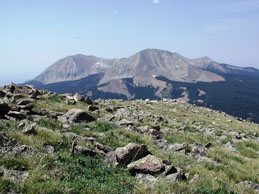 ALPINE TUNDRA: (kobresia, alpine avens, Artic willow, tufted hirgrass, American bisort, marsh-marigold, old-man-of-the-mountain and covers 5percent of the state. Elevation 11,400 ft and higher, is a relatively inhospitable environment, even more so in the winter.
ALPINE TUNDRA: (kobresia, alpine avens, Artic willow, tufted hirgrass, American bisort, marsh-marigold, old-man-of-the-mountain and covers 5percent of the state. Elevation 11,400 ft and higher, is a relatively inhospitable environment, even more so in the winter.
Animals living in these altitudes have adapted hibernation, use of under snow tunnels and migration to lower altitudes. The least chipmunk, mice, voles, shrews, yellow bellied marmot, mountain goats, mountain sheep, pica, Northern Pocket Gopher, Montane voles, long-tailed voles, Long tailed weasel, coyotes, and Elk. Picture by: Rockwood School District
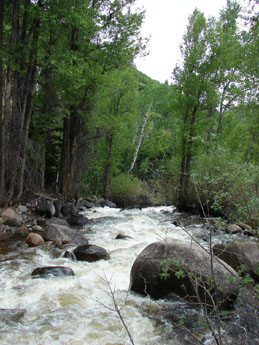 RIPARIAN SYSTEMS: (Plains cottonwood, mountain willow, cottonwood, Geyer willow, peach-leaved willow, sandbar willow, broad-leaved cat-tail, great bulbrush, field horsetail, salt-grass, sand drop-seed, river birch, rushes, water sedge, beaked sedge.) Covers one to two percent of the state, elevation of 11,000 ft.
RIPARIAN SYSTEMS: (Plains cottonwood, mountain willow, cottonwood, Geyer willow, peach-leaved willow, sandbar willow, broad-leaved cat-tail, great bulbrush, field horsetail, salt-grass, sand drop-seed, river birch, rushes, water sedge, beaked sedge.) Covers one to two percent of the state, elevation of 11,000 ft.
Animals you can expect to find are eastern cottontail, fox squirrels, white-tailed deer, beaver, muskrat, mink, meadow voles, jumping mice, Montane voles, long-tailed voles, montane shrews, western jumping mice, deer mice. Picture by: Stacy Chase
PATTERS OF MAMMALIAN DISTRIBUTION: “Bio-geography is the study of the patterns of distribution of organisms: which species occur where? Why do they occur there? A mammal’s occurrence in a particular area is a consequence of history, geography, physiographic, climate and ecological relationships with plants and other animals. Geological events have shaped the landscape. Physiographic influences the occurrence of plant communities, which create historic and present barriers and corridors to movement. Climate can restrict a species at its limit of tolerance. Stochastic, or random, factors may play a role, as in the documented movements of small rodents as stowaways aboard trains and ships. Ecological relations influence how species assemble into communities, a result of symbiotic interactions (competition, predation and so forth)” –Mammals of Colorado
As people cultivate and inhabit these areas it changes the lay of the land and animals must adapt. This adapting often means finding homes around people and sometimes in our homes. This unavoidable conflict can be mitigated by knowledgeable wildlife damage professionals. Armed with the knowledge of these animals’ habitats, living requirements and tendencies we can assist in removing these animals from problem areas and relocate them to areas that are more suitable to their nature.
